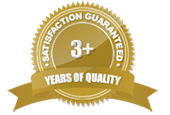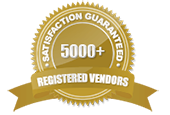First aid and health and safety responsibilities are an important part of being an employer, with many legally enforceable regulatory requirements and best practice guidelines to abide by. Make sure you get this right, and you will keep your employees and customers safe as well as avoid costly legal sanctions and other repercussions if the worst happens. Here is our quick overview of your responsibilities and how to meet these requirements.

Envira Gallery
The Law
The Health and Safety (First Aid) Regulations of 1981 state that employers must provide sufficient numbers of first aid-trained personnel, along with the equipment required, to provide emergency aid if someone on site is injured or taken ill.

Put simply, this means you have to be able to provide care to someone in an emergency. You don’t need to prepare for every eventuality, though, as that would be nearly impossible. You need to provide care that is suited to your workplace – an office won’t necessarily need an eye bath, but a chemical manufacturer would need quite a few. Similarly, a library is unlikely to need burn treatments, but a professional kitchen will.
Assess Your First Aid Responsibilities
The very first step in identifying your specific requirements is an audit. Walk through every part of your organisation from the front door to back, including office spaces, kitchen areas, employee-only rooms, manufacturing floors, etc. You’re looking at every aspect of operations and identifying the most likely causes of accidents.

You should also review your safety records and accident logbooks to see what the most common injuries are and then take steps to a) mitigate those risks, and b) prepare first aid staff and equipment to deal with incidents if they occur.
The law only applies to employees, but it is best practice to also include customers/visitors in your first aid planning.
An important consideration when assessing your first aid needs is shift work. There’s no point in having a good number of first aid trained personnel on the day shift, but none on-site overnight – you’ll need to work with scheduling/human resources staff to ensure that there are enough trained people on the premises at all operating times. This is also relevant to multiple sites or larger campuses – having all your first aid trained people in one area can be hazardous. What happens if there is an accident at the far end of your facility? Will staff and equipment get to the injured person in a reasonable amount of time to provide emergency response aid? To ensure a fast and reliable emergency response, organizations should consider implementing security and monitoring solutions for workplace safety. These systems can help supervisors detect accidents quickly and deploy aid where needed, minimizing potential delays caused by distance or limited visibility in large facilities.
Self-employed people are also required to make arrangements – even ones who work from home.
Read how this decor stylist hosted her covid-safe wedding at home.
Deploy
When you have a detailed understanding of your needs, it is time to deploy the appropriate response. Make sure you have enough trained personnel; training is available from a range of providers and these are not checked by the HSE so it is your responsibility as an employer to ensure that the training is high-quality. Buy or put together first aid kits, store them where they are easily accessible and keep them properly stocked. You should check first aid kits periodically, especially after an incident, to make sure that the contents are in place, in date (for perishables) and that the kits themselves have not been moved, blocked or otherwise made difficult to find/get to.
If you are in any doubt about your legal responsibilities, you can find the full Health and Safety Executive guidance on the first aid at work on the HSE website.
Find fully vaccinated and trusted wedding planners with ShaadiWish.













Comments are closed.